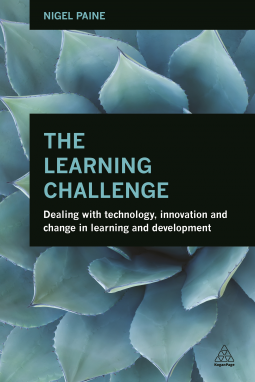
The Learning Challenge
Dealing with Technology, Innovation and Change in Learning and Development
by Nigel Paine
This title was previously available on NetGalley and is now archived.
Send NetGalley books directly to your Kindle or Kindle app
1
To read on a Kindle or Kindle app, please add kindle@netgalley.com as an approved email address to receive files in your Amazon account. Click here for step-by-step instructions.
2
Also find your Kindle email address within your Amazon account, and enter it here.
Pub Date Aug 28 2014 | Archive Date Dec 09 2014
Description
The landscape of workplace learning is transforming. Organizations today understand that formal training is not always the best solution in the fast changing world of innovation and new technology. The rise of social and informal learning, gamification of training, dealing with big data and creating value within the supply chain are just some challenges L&D professionals face in their work today.
The Learning Challenge helps practitioners make sense of the latest developments in this area and their impact on the learning function in their organization. With the help of case studies and interviews from a range of high profile practitioners, the author defines the role of the new learning leader and illuminates the practical implications for creating and implementing a learning strategy for the 21st century.
Available Editions
| EDITION | Other Format |
| ISBN | 9780749471255 |
| PRICE | $39.95 (USD) |
Average rating from 2 members
Featured Reviews
 John G, Reviewer
John G, Reviewer
Learning is an integral part of great workplaces, and as our world changes, continuous learning becomes not a luxury for the few but a necessity for the many, according to Nigel Paine in his book The Learning Challenge: Dealing With Technology, Innovation and Change in Learning and Development. In a new age, we need new models of business, and to match these we need new models of learning.
The author argues that workplace-based learning is undergoing a number of significant transformations:
Isolated learning operation to one which is fully aligned with the business Course catalogue approach to multifaceted learning environments Isolated incidents of learning to a focus on continuous learning Formal class-based learning to a balance between formal, experiential and on-the-job Infrequent large chunks of learning to small granules delivered at the moment of need Management indifference and polite tolerance to enthusiastic embrace After discussing the changing context for learning, the author moves on in the second part of the book to discuss new ideas for learning, including ways of measuring impact and recent developments in instructional design. The third part of the book covers such concepts as big data and learning analytics, neuroscience and learning, and trends in learning technology.
The book is probably more suited for reading by corporate learning specialists, rather than by a general audience. As a reader who is not a learning specialist, I was less interested in trends in the L & D profession and more interested in what the author had to say about measuring impact, instructional design, and technology for learning.
Methods of corporate learning and development are changing. This book explains how.



